Handmade ceramic mug [markings: “G. Nikolaou”; “2000”] – 351,500 ppm Lead (this is an alarmingly high level of Lead)
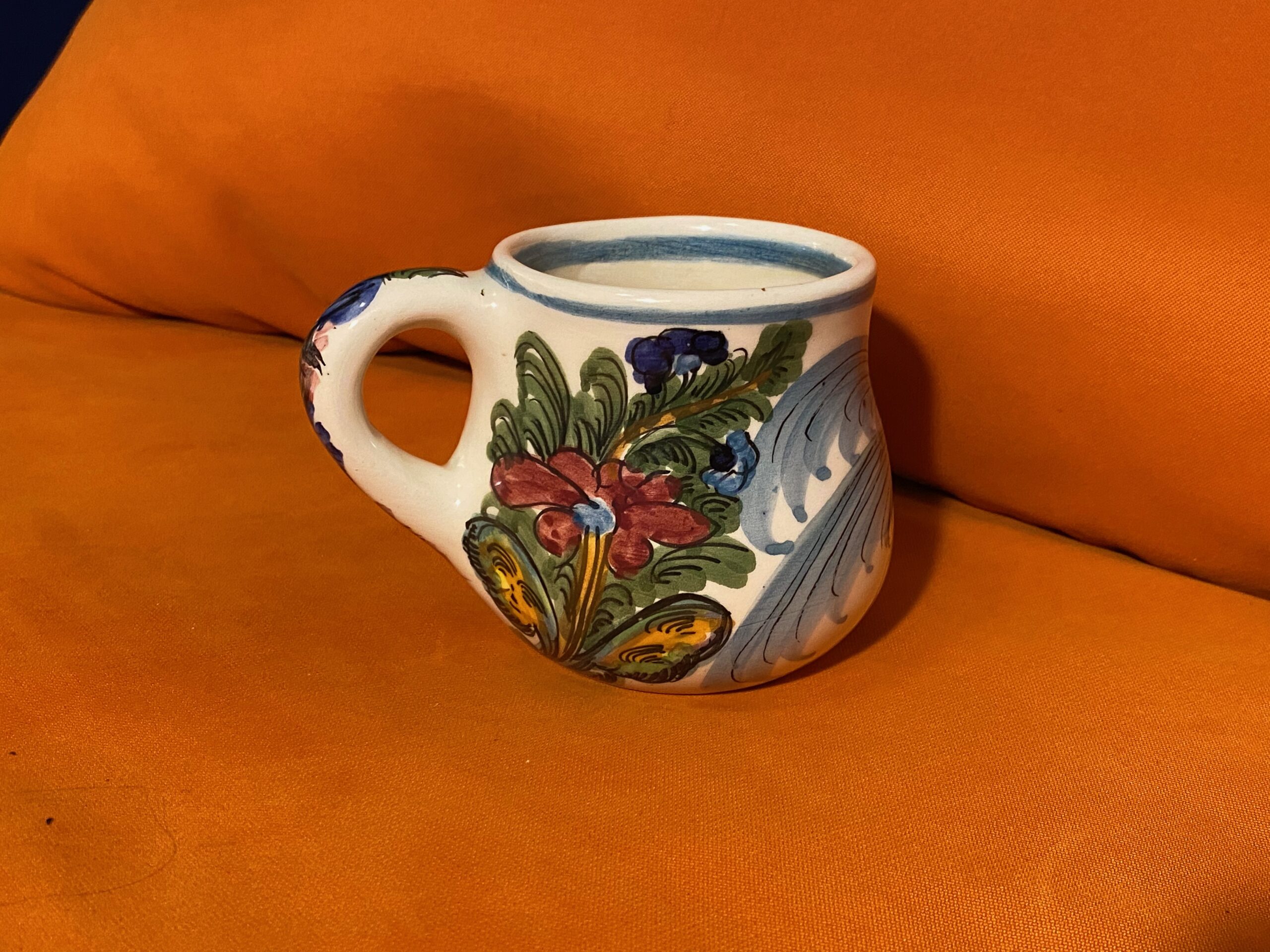
 Posted: June 13, 2020
Posted: June 13, 2020
Introduction: Tamara Rubin is an independent advocate for consumer goods safety, and she is also a mother of Lead-poisoned children. She began testing consumer goods for toxicants in 2009 and was the parent-advocate responsible for finding Lead in the popular fidget spinner toys in 2017. She uses high-precision XRF testing (a scientific method used by the Consumer Product Safety Commission) to test consumer goods for metallic contaminants – including Lead, Cadmium, Mercury, and Arsenic.
The mug pictured here has the following readings when tested with an XRF instrument:
Outside white area of mug:
- Lead (Pb): 351,500 +/- 38,000 ppm
- Barium (Ba): 3,810 +/- 1,211 ppm
- Iron (Fe): 753 +/- 416 ppm
- Titanium (Ti): 1,148 +/- 354 ppm
- Chlorine (Cl): 22,200 +/- 5,000 ppm
Inside of mug:
- Lead (Pb): 342,800 +/- 38,000 ppm
- Copper (Cu): 593 +/- 390 ppm
- Iron (Fe): 631 +/- 400 ppm
- Titanium (Ti): 1,268 +/- 356 ppm
- Chlorine (Cl): 17,300 +/- 4,400 ppm
Are the results reported above accurate?
Test results reported here on my blog are science-based, accurate, and replicable. Test results reported here are from tests that were done for a minimum of 60 seconds each (unless otherwise noted), and repeated multiple times, to confirm the results. As with all the testing reported here on my blog, a freshly-calibrated high-precision XRF instrument testing in Consumer Goods mode was used to test the item pictured here.
How much Lead is too much Lead?
There is no total content limit for total measurable Lead (as detectable and measured with an XRF instrument) in modern dishware. Limits have only been set for the total amount of any detectable Lead that is leaching at the time of manufacture – as measured by leach-testing. However, for context, for modern items intended for use by children to be legal (and not subject to recall) the paint or coating of these items needs to be below 90 ppm Lead, and the substrate of the item needs to fall below 100 ppm Lead when tested. If this mug were made today and “intended to be used by children”, it would be illegal. I consider dishes and kitchenware that test positive for Lead at levels below 90 ppm to be “Lead-safe”. [Note: my personal preference is to have all of the items in my own kitchen be 100% Lead-free – not just “Lead-safe”.]
Are you new here?
For those new to my website, please check out the menu in the header of the website for more information about how I test things (and my background, etc.) On each post you can also click on any of the keyword tabs at the top of the post to find more items in that category. Here’s the post discussing the type of testing I do, and the specific instrument I use to detect, analyze and confirm metals content, and ultimately produce the resultant data for each item reported here – link.
Some additional reading that may be of interest to you:
- The “mugs” category here on my blog (I have over 128 posts about mugs!)
- Post with advice on choosing a Lead-free mug.
- Some additional Lead-free mug choices.
- The “Lead-free mugs” category on the blog.
As always, thank you for reading and for sharing my posts. Please let me know if you have any questions.
Tamara Rubin
#LeadSafeMama
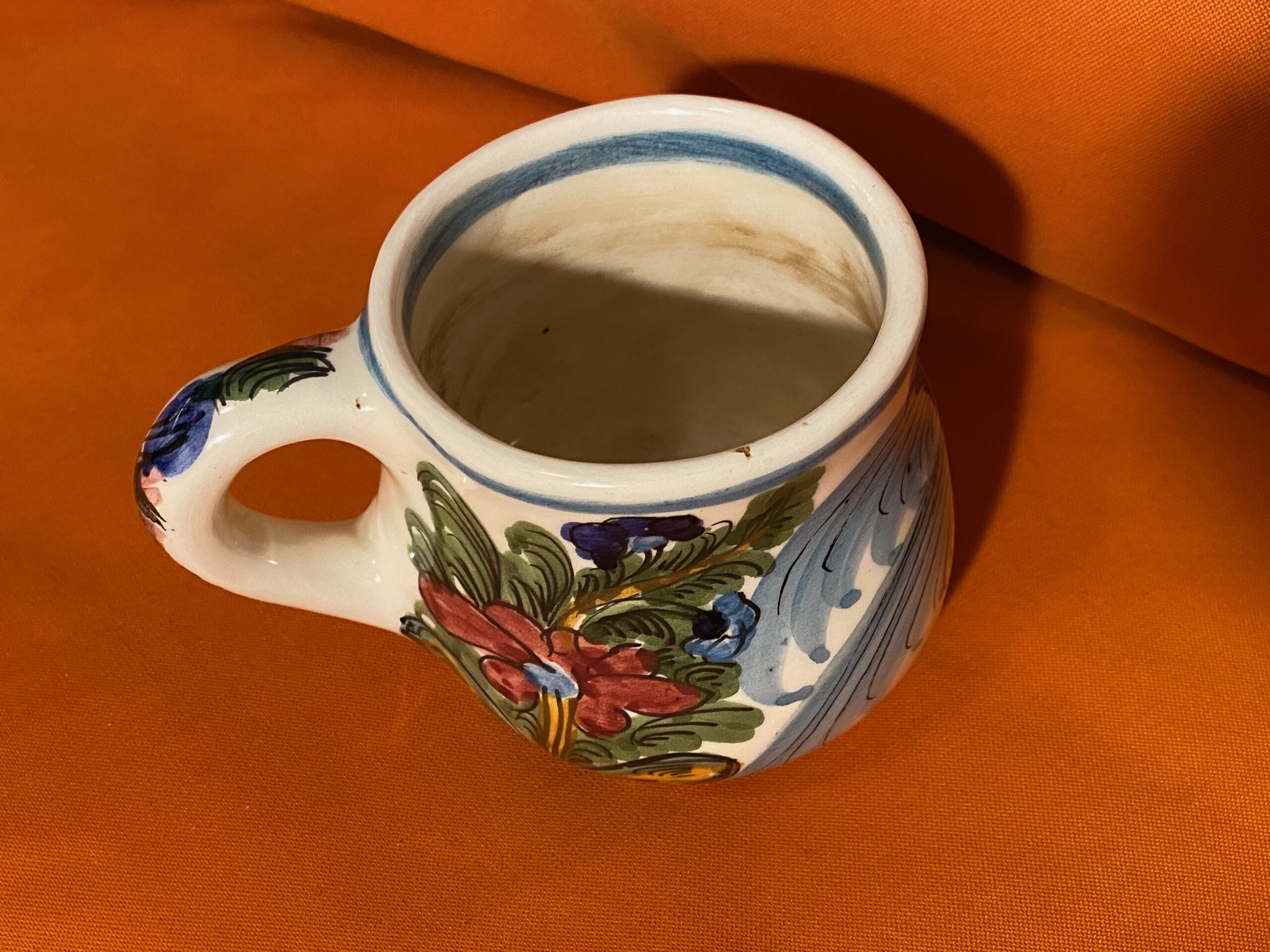
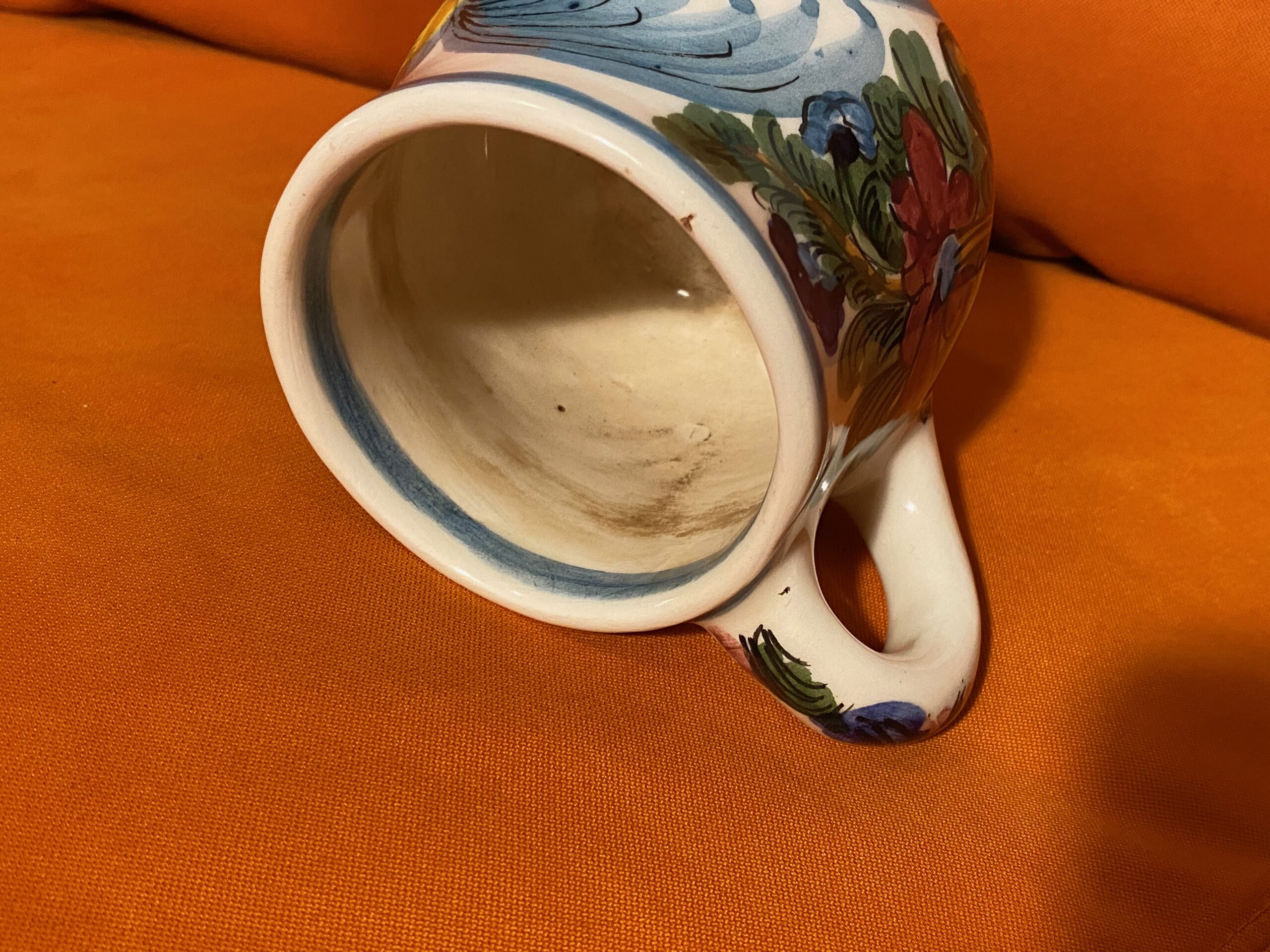
Never Miss an Important Article Again!
Join our Email List


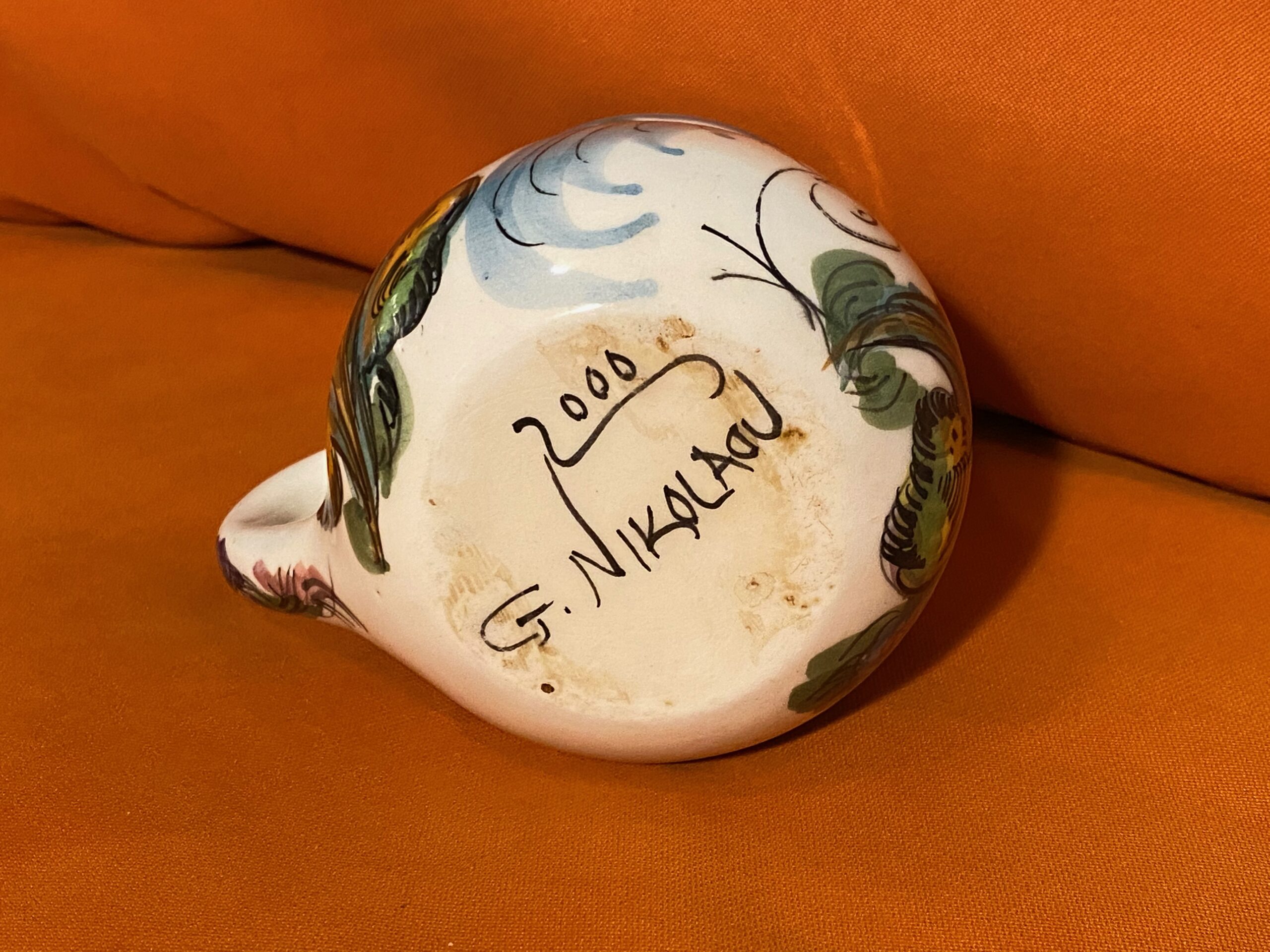 Posted: June 13, 2020
Posted: June 13, 2020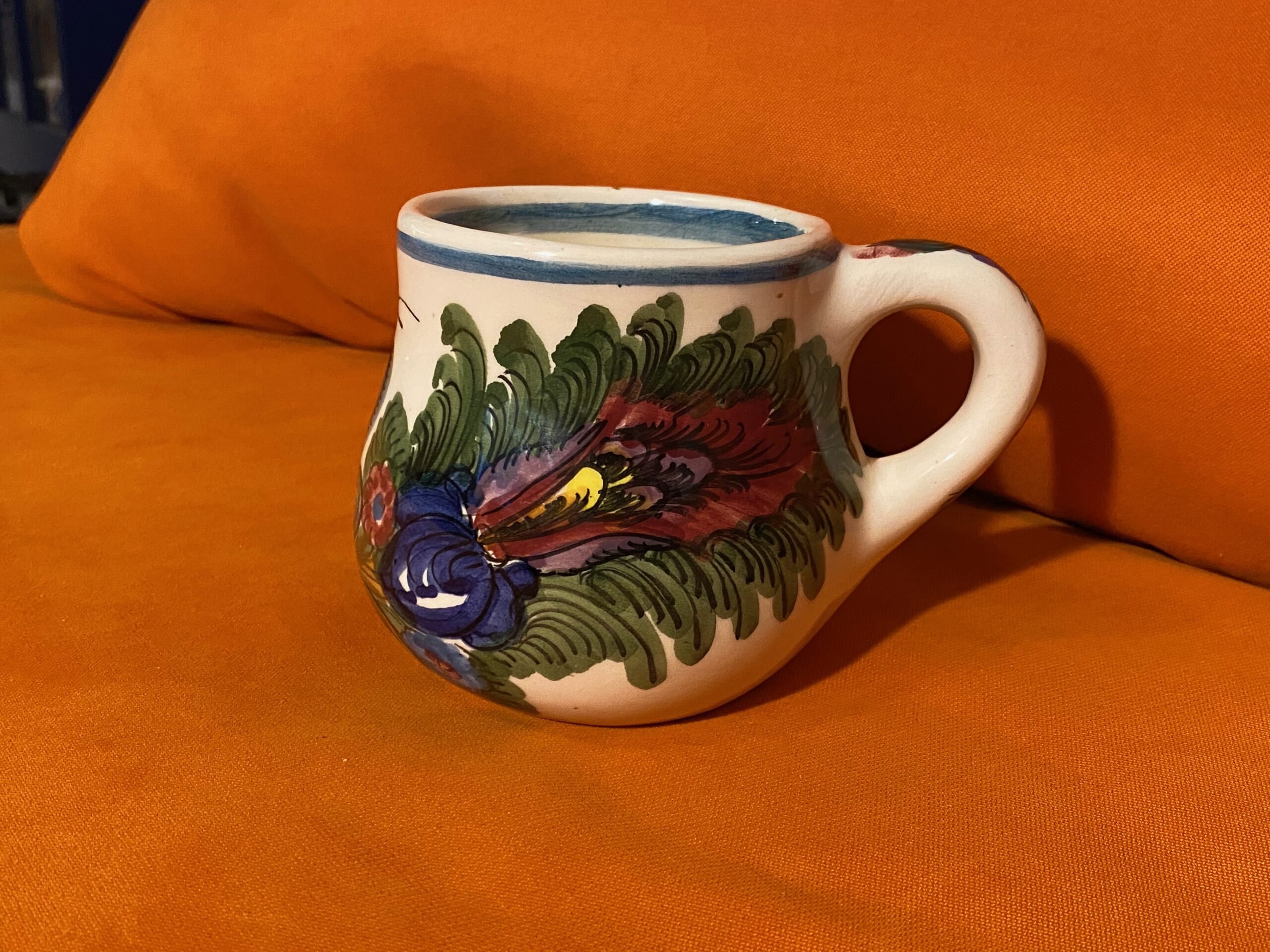

Dear Tamara,
My husband contacted you because I only have two of these mugs left, but never realized that you are showing it because it is SO full of lead. Thank you so much for drawing it to our attention! I will have to adjust to a new mug although I loved these dearly.
Be well.
Many thanks,
Sue Kaufman
Oh! yes – these are very dangerous. If you have been drinking out of these on a regular basis I would seriously consider getting a blood Lead test right away. These are among some of the highest Lead mugs that I have ever tested.
Tamara
Hi – Thanks for the info.. Wondering about plates and bowls by G. Nikolao? We inherited a huge set and do not use the mugs but have used plates and bowls. I imagine plates are safer than bowls are safer than mugs in terms of leachability given how they are generally used.
Thanks
Craig
90 ppm and up is considered unsafe for kids in modern coatings and glazes. These are more than 350,000 ppm Lead (vs. 90). I would not consider any products from this potter to be safe for food use in any manner until additional testing can be done to confirm they are safe (or prove they are not.) This is a VERY DANGEROUS level of Lead. Here’s my post that discusses Lead exposure symptoms in adults (with lots of linked science):
https://tamararubin.com/2017/01/what-is-the-impact-of-lead-poisoning-in-adults-including-college-age-students/
Here’s my overview post about the concern for Lead in pottery and dishware: https://tamararubin.com/topics/does-vintage-and-new-functional-pottery-and-dishware-have-unsafe-levels-of-lead/
Tamara
Thanks Tamara –
Our dinnerware won’t be used anymore.
The lead content in the cup you tested based on XRF is around 34-35%. Lead solder is about 40%. I am wondering how so much lead could be contained/used in ceramic glazing? Are there any studies/publications on this? Has the potter or anyone who has marketed/sold the ceramics contacted on on this since you posted the results?
Thanks again,
Craig
Hi Craig – good to hear. You should consider getting a blood Lead test or a urine test for metals asap – so you know if there are any potential long term impacts. I have tested some pottery that was as high as 700,000 ppm Lead in the glaze. It is often the crystal clear coating that has the lead (just as crystal itself is about 300,000 to 400,000 ppm Lead – Lead creates that sparkle and sheen.) Here’s an example of crystal:
https://tamararubin.com/2019/11/waterford-leaded-crystal-bud-vase-386000-ppm-lead-39-lead-leaded-crystal-items-can-passively-create-lead-dust-in-your-home/
Here’s that 700,000 dish:
https://tamararubin.com/2016/12/vintage-c-1955-1966-franciscan-autumn-pattern-china-716100-ppm-lead-arsenic-too/
No one from this manufacturer has ever contacted me.
Tamara
Hi Tamara – We will be getting tested and will let you know the results. We never used the cups. The bowls occasionally. The plates more or less on a daily basis. The plates do appear to be in very good condition; so hopefully the lead has not been leaching. Curious if you didi a 3M test in an undamaged area of the cup you have?
Thanks, Craig
Hi Craig – I use XRF testing primarily and the cup does not belong to me (so my reader has it – as I sent it back to her after testing):
https://tamararubin.com/2016/12/ask-tamara-what-do-you-use-to-test-for-lead/
With that level of Lead (+ the age and intended use of the piece) I expect it will leach lead at unsafe levels (even if just using plates.)
The amount of lead it takes to poison a human will not show up as wear on a plate – it is microparticulate lead (invisible to the naked eye.)
This post might help provide some context: https://tamararubin.com/2019/03/the-sugar-packet-analogy-how-much-lead-dust-does-it-take-to-poison-a-child/
Tamara
Hi Tamara -Thanks again for your response.
My partner is a nurse and was able to get her blood drawn at work and sent for testing on Monday. Her results came back at < 1 microgram/deciliter (Quest Labs).
I am getting my blood drawn today.
Our Nikolaou ceramic dishes are dated 1977-81, so they are older but look very similar to the one you tested. But this is a variable.
In any case her results suggest to me (based on my background*) that if these similar dishes actually contain high levels of lead (a potential source of lead and thus potential risk), the exposure pathway is currently not complete or results in only relatively low levels of oral ingestion exposure . That is not to say that these dishes are safe to use without testing them specifically but it appears that the dishes either do not contain high levels of lead or are not currently releasing the lead at a rate that results in a BLL above one (1) microgram/deciliter.
Craig
(*26 years providing technical support to EPA at large Superfund sites including developing conntaminant transport and fate models to support environmental and human health based risk assessments for exposure to chlorinated organic solvents and heavy metals).
Hi Craig – a BLL of “less than 1” is an excellent result, but I do want to point your attention in the direction of some newer (more recent) science that shows the impact of levels below 1.0 and also to the consideration that there has been Lead industry lobby influence on the capacity/ability of labs to provide test results below 1.0.
This is not to be alarmist – but to give you a full picture of the considerations.
Please read this (and the linked science from Dr. Rabito that discusses the impacts of a blood Lead Level as low as the population levels of 0.43 on women of childbearing age):
https://tamararubin.com/2019/07/today-is-my-youngest-sons-11th-birthday-happy-birthday-charlie-parker-eliezer-rubin-the-story-of-how-lead-impacted-his-birth/
Also this (which discuses the impact of low level exposures more generally – but has lots of good linked science at the end of this article – which was not written by me):
https://tamararubin.com/2017/01/toxic_lead/
Also this – which talks about “normal” levels:
https://tamararubin.com/2017/01/if-a-doctor-says-your-babys-blood-lead-level-is-normal-get-a-new-doctor-theres-no-normal-level-of-lead-in-blood/
And this study from Harvard – which has some of the more recent data on “normal” levels for humans:
https://tamararubin.com/2017/09/natural-2/
Blood Lead levels are indicative of current exposures and you may want to do a urine or hair test to get a better picture of potential long-term chronic (low level) exposure. More on that at this link:
https://tamararubin.com/2020/05/i-heard-that-urine-and-hair-tests-for-heavy-metals-including-lead-were-not-real-or-useful-test-results-why-is-this/
BTW: I LOVE that you have this background and are engaging in this conversation in such a thoughtful and considered way. Thank you.
Have you seen my film yet? Here’s the link if not (it has interviews with many of the top scientists on the issue and discusses the potential for low level exposure impacts):
Also here’s the post about potential symptoms in adults; https://tamararubin.com/2017/01/what-is-the-impact-of-lead-poisoning-in-adults-including-college-age-students/
The goal of course (in all of this) is to try to prevent exposure BEFORE it happens (or BEFORE it manifests in chronic health impacts) which is why waiting to use the dishes until you do further testing is warranted (perhaps you lucked out and somehow for your batch they used Lead-free glaze!)
If you wanted to send a dish in to me for testing – here’s how that works:
https://tamararubin.com/2019/08/tamara-can-i-send-you-one-of-my-dishes-to-test-for-lead/
Plus I don’t know if you saw this recent piece (this month) by Consumer Reports – but it is of interest (although I disagree with some of the nuances of most of the statements in the article (including the fact that a home test kit does not work on dishes!), I am glad they covered the issue – and the quotes from the doctors are spot on):
https://www.consumerreports.org/lead/why-you-should-test-your-vintage-or-imported-dishes-for-lead-a2722202665/
Tamara